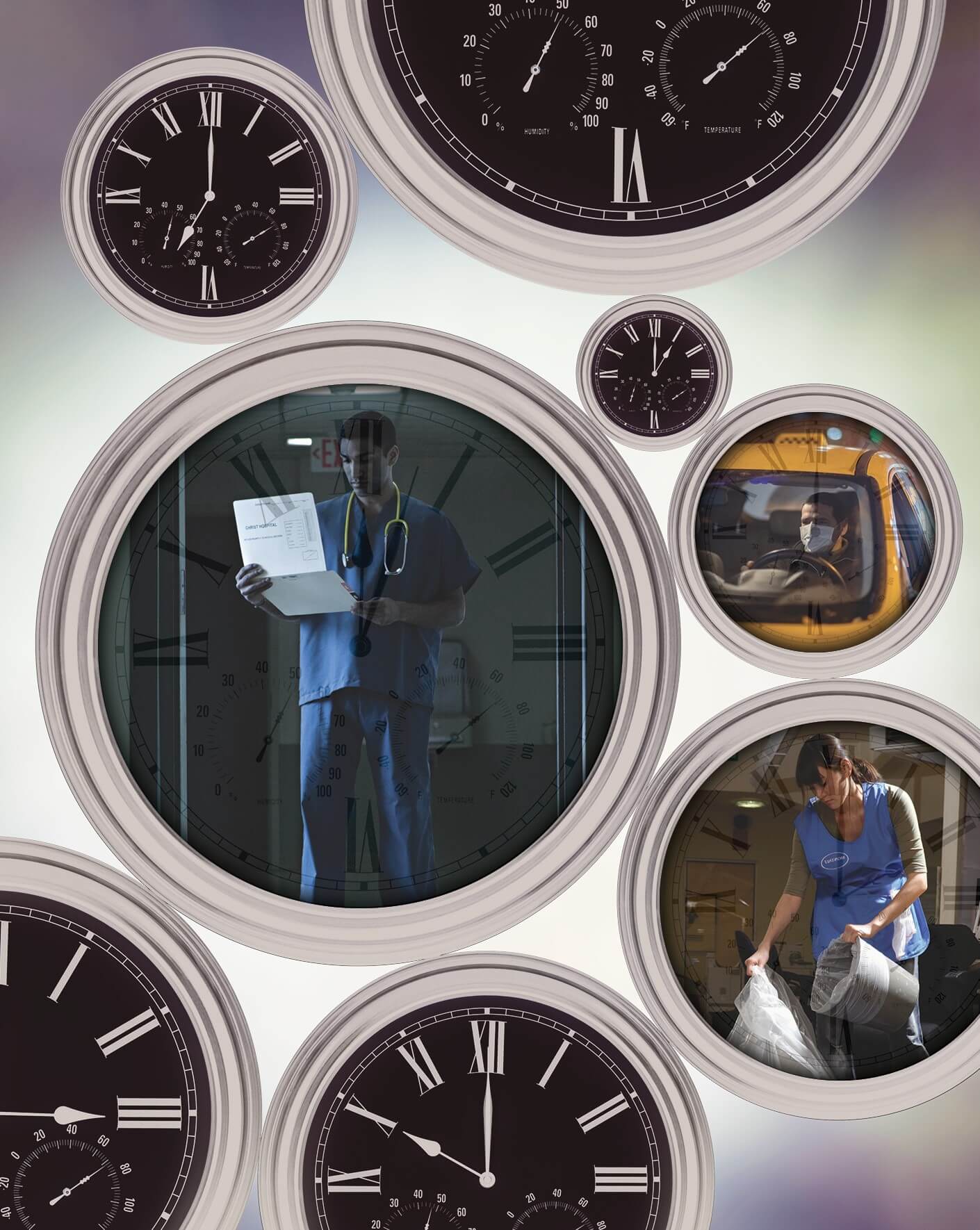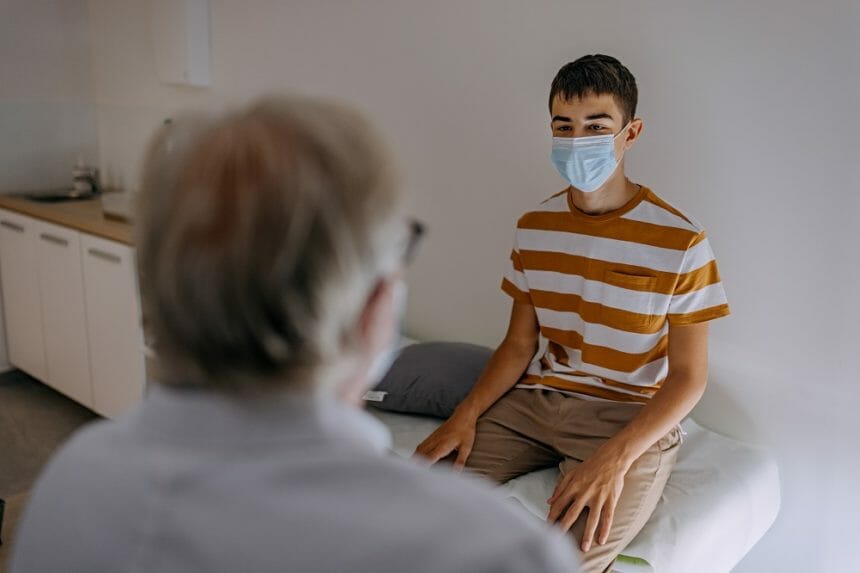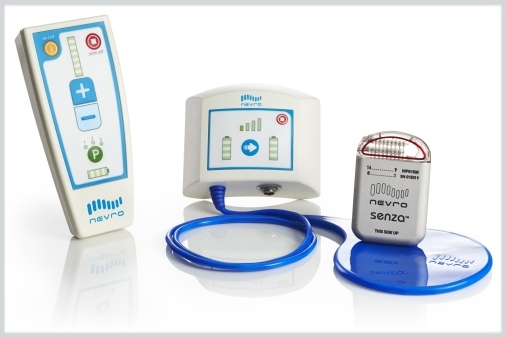In the United States, 20% of employees work during shifts that are outside of the traditional 9:00 AM to 5:00 PM schedule, including many in the health care industry.1-3 Work schedules may include early morning, evening, night, or rotating shifts.4,5 Approximately 5% to 10% of shift workers suffer from shift work disorder (SWD), a circadian sleep-wake cycle disorder defined by poor quality sleep that results in excessive sleepiness and insomnia.1-4 The lack of restful sleep increases the risk for drowsy driving, cardiovascular disease, metabolic disorders, cancer, and cognitive impairment.1-9 People working night shifts and rotating shifts are at higher risk for the disorder, with a prevalence of 14% and 8%, respectively.10
Primary care clinicians play an essential role in screening patients for SWD. A detailed clinical history, sleep log, and actigraphy help practitioners diagnose the condition.1-4 Patients with SWD often sleep less than the 7 hours recommended by the American Academy of Sleep Medicine (AASM) and the Sleep Research Society.6
Pathophysiology
The cause of SWD is the inability to sleep due to imbalance of the circadian rhythm and internal homeostatic sleep drives.2,4,5 The circadian rhythm is regulated by the suprachiasmatic nucleus (SCN), also known as the ‘master pacemaker,’ which is located in the hypothalamus.5,8 When light enters the eyes, photoreceptors send signals to the SCN to suppress the release of melatonin from the pineal gland, preventing the urge to sleep during the day.5,7 In shift workers who must sleep during the day, sleep eventually occurs due to the build-up of internal sleep pressure, but the circadian misalignment causes a decrease in sleep duration and inadequate sleep.4,5 In addition to light exposure, activity and meal timing signal the SCN to regulate the sleep/wake cycle.7 Shift work requires eating, socializing, and physical activity during hours that are at odds with the daily circadian rhythm, causing dysregulation of physiologic processes.5,7
Adverse Health Outcomes
Shift work is a risk factor for hypertension, coronary heart disease, stroke, diabetes, obesity, and some types of cancers.1-8 The dysregulation of sleep affects the hormones leptin and ghrelin, which signal to the body to stop food intake and stimulate hunger, respectively.7 The altered eating patterns of shift workers — eating on an altered schedule, quickly devouring food, and skipping meals — dysregulates the hormonal balance and increases the risk for metabolic syndrome (abdominal obesity, hypertension, hyperlipidemia, and diabetes).7,11 Working nontraditional hours also can increase the risk of engaging in unhealthy behaviors such as smoking, excessive alcohol use, and decreased exercise, which also can lead to obesity.4,8
In 2007, the International Agency for Research on Cancer and the World Health Organization designated shift work as a possible carcinogen.12 A meta-analysis of 57 studies with more than 5.1 million participants noted that night shift workers have a 15% increased risk for cancer compared with those who work traditional hours, and the risk is cumulative over the years of shift work.13 Rotating shifts, which cause severe circadian disruption, pose the highest risk for cancer compared with fixed shifts (odds ratio [OR], 1.14; 95% CI,1.04-1.24).13 Shift workers are at particularly increased risk for breast (OR, 1.22; 95% CI, 1.08-1.32) and prostate cancers (OR, 1.26; 95% CI, 1.05-1.52).13 Carcinogenesis is attributed to decreased levels of nighttime melatonin, as well as decreased vitamin D level and circadian misalignment.13
Poor sleep causes fatigue and drowsiness, resulting in cognitive decline, which increases the incidence of work accidents and mistakes.3-5 Worker and public safety are at risk because shift workers include those in health care, protective services, and transportation roles.4 Shift work decreases overall mental performance; for example, 10 years of shift work equates to 6.5 years of age-related mental decline (2.5-point decrease on 0-100 scale).3,4 People with SWD often are tired while driving,5,9 and drowsy driving is reported to be the cause of 16.5% of fatal crashes.9 Those sleeping fewer than 6.75 hours had a 73% increased risk of falling asleep during the Multiple Sleep Latency Test.6
Recent research suggests that workers with a lower socioeconomic status (SES) have an even higher risk for health problems due to SWD.14 Workers with lower SES may have additional causes for insufficient sleep, such as increased exposure to environmental pollutants, psychosocial pressures, and neighborhood stressors.14
References
1. Wickwire EM, Geiger-Brown J, Scharf SM, Drake CL. Shift work and shift work sleep disorder: clinical and organizational perspectives. Chest. 2017;151(5):1156-1172. doi:10.1016/j.chest.2016.12.007
2. Reid KJ, Abbott SM. Jet lag and shift work disorder. Sleep Med Clin. 2015;10(4):523-535. doi:10.1016/j.jsmc.2015.08.006
3. Jehan S, Zizi F, Pandi-Perumal SR, et al. Shift work and sleep: medical implications and management. Sleep Med Disord. 2017;1(2):00008.
4. Cheng P, Drake C. Shift work disorder. Neurol Clin. 2019;37(3):563-577. doi:10.1016/j.ncl.2019.03.003
5. Wright KP, Bogan RK, Wyatt JK. Shift work and the assessment and management of shift work disorder (SWD). Sleep Med Rev. 2013;17(1):41-54. doi:10.1016/j.smrv.2012.02.002
6. Watson NF, Badr MS, Belenky, G, et al. Joint consensus statement of the American Academy of Sleep Medicine and Sleep Research Society on the recommended amount of sleep for a healthy adult: methodology and discussion. J Clin Sleep Med. 2015;11(8):931-952. doi:10.5664/jcsm.4950
7. James SM, Honn KA, Gaddameedhi S, Van Dongen HPA. Shift work: disrupted circadian rhythms and sleep-implications for health and well-being. Curr Sleep Med Rep. 2017;3(2):104-112. doi:10.1007/s40675-017-0071-6
8. Moreno CRC, Marqueze EC, Sargent C, Wright KP, Ferguson SA, Tucker P. Working Time Society consensus statements: evidenced-based effects of shift work on physical and mental health. Ind Health. 2019;57(2):139-157. doi:10.2486/indhealth.SW-1
9. Bhat A, Marciarille AM, Stevens D, Ingram DG. Drowsy driving considerations in non-commercial drivers for the sleep physician. J Clin Sleep Med. 2019;15(7):1069-1071. doi:10.5664/jcsm.7898
10. Drake CL, Roehrs T, Richardson G, Walsh JK, Roth T. Shift work sleep disorder: prevalence and consequences beyond that of symptomatic day workers. Sleep. 2004;27(8):1453-1462. doi:10.1093/sleep/27.8.1453
11. Costa G. Shift work and health: current problems and preventive actions. Saf Health Work. 2010;1(2):112-123. doi:10.5491/SHAW.2010.1.2.112
12. International Agency for Research on Cancer. Night Shift Work. 2020;124. Accessed October 25, 2021. https://publications.iarc.fr/593
13. Lui W, Zhou Z, Dong D, Sun L, Zhang G. Sex differences in the association between night shift work and the risk of cancers: a meta-analysis of 57 articles. Dis Markers. 2018;7925219. doi:10.1155/2018/7925219
14. Jackson CL, Redline S, Emmons KM. Sleep as a potential fundamental contributor to disparities in cardiovascular health. Annu Rev Public Health. 2015;36:417-440. doi:10.1146/annurev-publhealth-031914-122838






